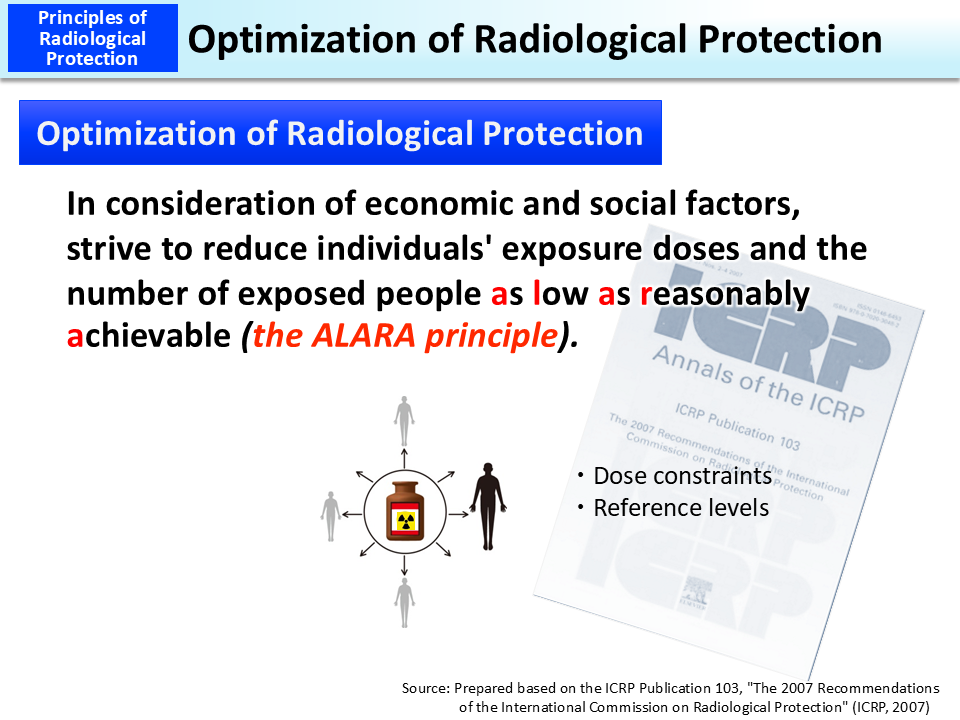Optimization of Radiological Protection
The second principle is the optimization of radiological protection. When merits of an act of using radiation outweigh radiation risks, it is decided to use radiation by taking measures to reduce exposure doses as low as reasonably achievable. This is called the ALARA principle. The optimization of radiological protection means to strive to reduce exposure doses as low as possible, while taking into consideration social and economic balances, and does not necessarily mean to minimize exposure doses.
In order to promote the optimization of radiological protection, dose constraints and reference levels are utilized. Reference levels are adopted as indicators to limit individuals' doses from specific radiation sources in decontamination work, for example.
- Included in this reference material on March 31, 2013
- Updated on March 31, 2015

